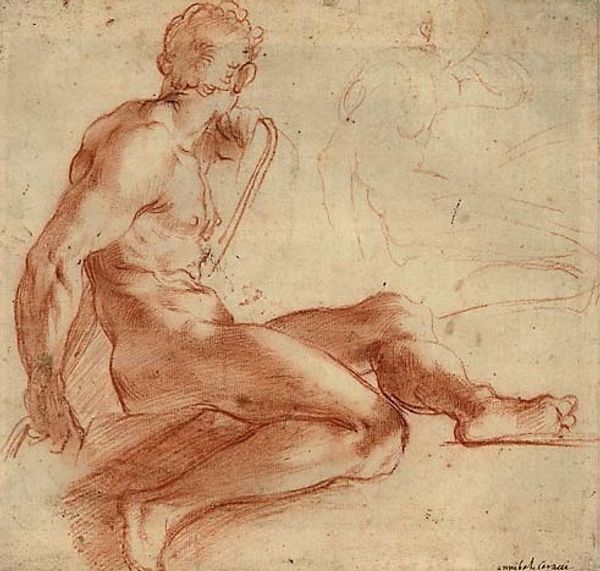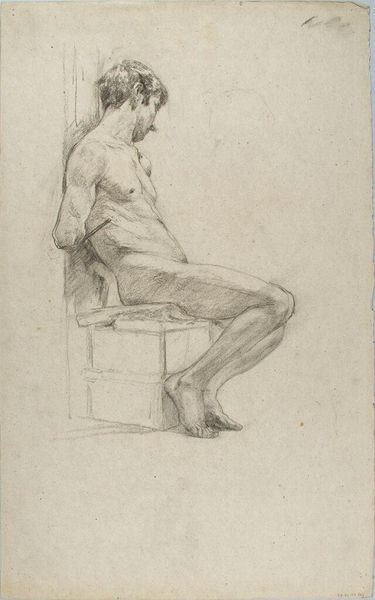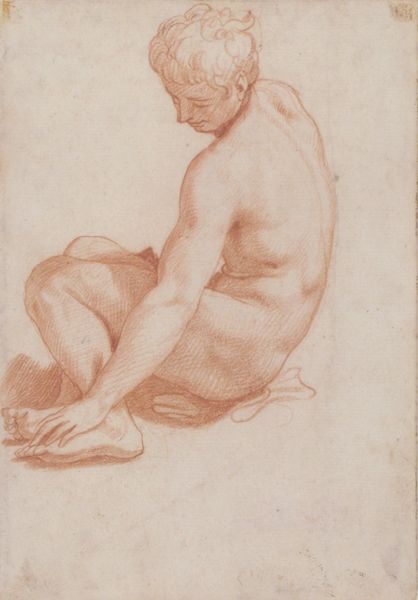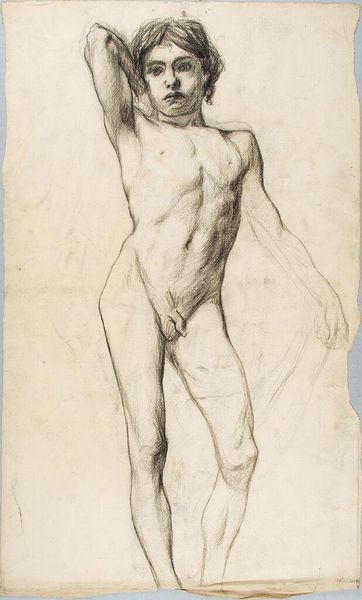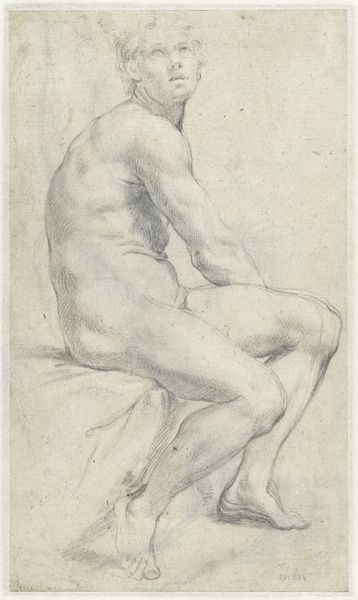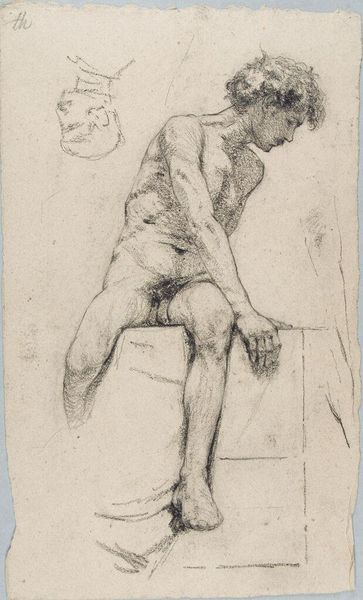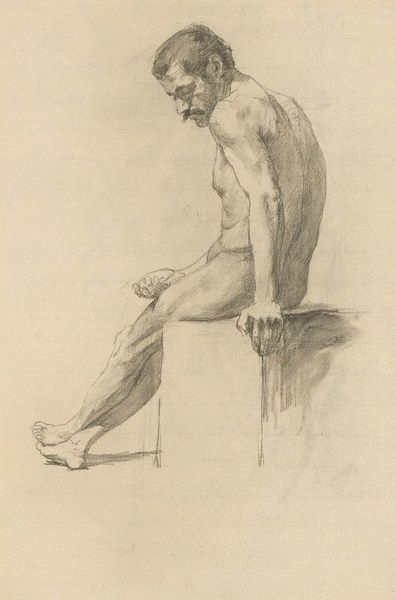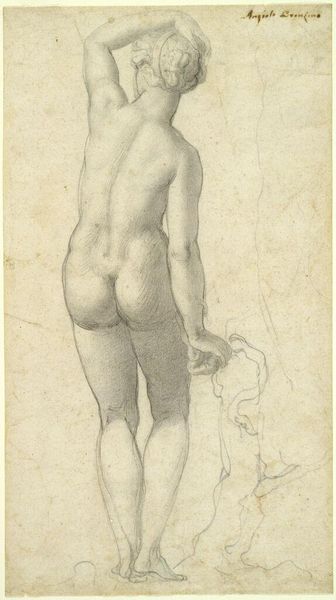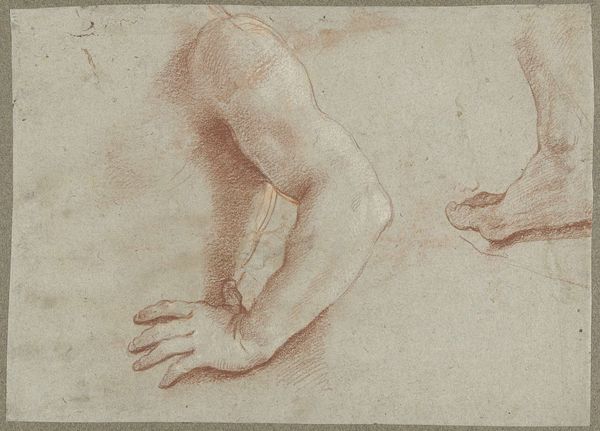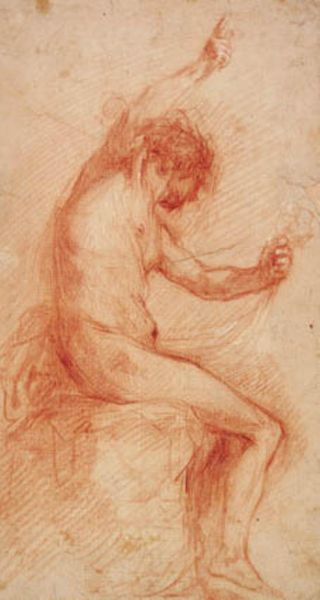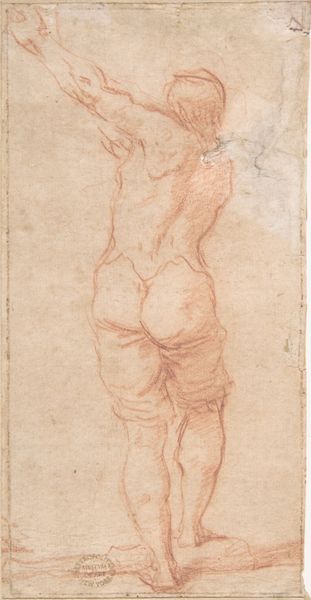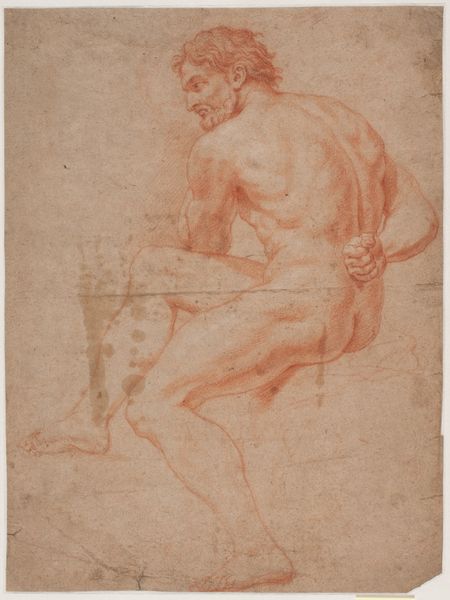
drawing, pencil
#
portrait
#
drawing
#
11_renaissance
#
pencil drawing
#
sketch
#
pencil
#
human
#
portrait drawing
#
academic-art
#
italian-renaissance
#
nude
#
arm
Dimensions: 35.7 x 21 cm
Copyright: Public domain
Curator: Good morning. Today we'll be examining Raphael's "Study for Adam," a pencil drawing created around 1509, currently held at the Uffizi Gallery. What are your initial thoughts? Editor: My immediate impression is one of raw potential, or maybe incompleteness. There’s a tension between the delicate shading and the unfinished quality, particularly in the face. It feels almost vulnerable. Curator: Indeed. Raphael’s focus here is not on precise anatomical rendering, but rather the interplay of line and shadow to define form. Observe how he employs hatching and cross-hatching to build volume in the torso and limbs. The materiality is of secondary importance; line dominates. Editor: But that very tension you pointed out between light and shadow is revealing! The historical context suggests this study played a pivotal role in larger works depicting the biblical Adam. How interesting that it showcases a man in repose and contemplation—a departure from Adam's conventional depictions. Curator: To a degree. However, the gesture itself—the seated figure, head tilted back—reveals the figure’s implicit ascension, gazing towards the divine. Semiotically, this elevation signifies not mere contemplation, but aspiration. And there's this very particular Renaissance ideal emerging of human perfectibility, echoed here in form. Editor: But doesn't this reflect societal shifts occurring at the time? Think about the Church's role in commissioning art to instill the Renaissance's political authority... Consider that "Study for Adam" was probably produced during that crucial moment and, it seems very natural to suppose Raphael aimed to subtly reinforce contemporary values around ambition and upward social mobility within religious constraints. Curator: That's a fascinating angle. However, focusing purely on historical narrative risks obscuring the artwork's internal relationships. Notice the subtle curves of the figure; consider the balance of the composition, irrespective of the societal interpretations... the drawing’s inherent beauty stands apart. Editor: Fair point. Perhaps my socio-historical lens overwhelmed the intrinsic qualities for a moment! Nonetheless, it’s truly insightful to consider both aspects when evaluating Raphael's draftsmanship and Renaissance ambitions simultaneously. Curator: Exactly. It's these multilayered readings that provide a more complete appreciation for the genius inherent in art such as Raphael's "Study for Adam."
Comments
No comments
Be the first to comment and join the conversation on the ultimate creative platform.
